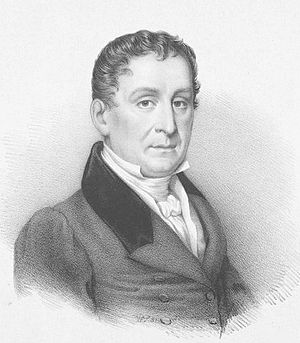Johann Baptist Cramer (24 February 1771 -- 16 April 1858)
Work: Piano Concerto No.8 in D-minor, Op.70 (1825)
| English pianist and composer Johann Baptist Cramer (1771-1858) "drawn from Life & on Stone" by William Sharp (1749-1824). (Photo credit: Wikipedia) |
Mov.I: Moderato assai 00:00
Mov.II: Larghetto 07:32
Mov.III: Rondo a L'Espagnola 16:28
Pianist / Conductor: Howard Shelley
Orchestra: London Mozart Players
The Concerto No. 8 in D minor, Op. 70, published by the fifty-four-year-old Cramer in 1825, but composed perhaps before 1820.
The work is replete with bold and highly original features that collectively strive to create an entirely new structure. The first movement begins with a fairly typical orchestral ritornello, followed by the solo exposition.
After subsequent statements of the secondary theme within this section, he notates a fermata (bar 199) on the dominant of F major, allowing us to collect our thoughts in anticipation of the exposition's conclusion.
Cramer delightfully frustrates this expectation, however, when the soloist initiates an abrupt move back to the tonic and prolongs, over pyrotechnical filigree, the dominant of the tonic for almost thirty bars. The movement comes to a halt on the dominant, held by a fermata in bar 231; the Larghetto second movement then follows in D major.
By using this design, Cramer jettisons almost two-thirds of the traditional content
of the first movement. He leaves the formal implications of the exposition unrealised, projecting them onto subsequent movements.
Development and resolution thereby become the business of the later movements.
The Larghetto second movement includes an elaborate, written-out cadenza, highly
unusual for a concerto middle movement.
And while the concerto is not thematically cyclical, all or parts of the secondary theme of the first movement reappear in different guises throughout the subsequent
movements, lending an element of organic cohesion to the work as a whole.
The lengthy Rondo a L'Espagnola finale attempts to resolve the questions introduced
by the strange thematic disposition of the first two movements. The title probably
refers to Cramer's pervasive employment of a tambourine-like, quasi-bolero rhythmic
figure. This finale sounds like a sonata-rondo movement of the kind frequently found in Mozart's concertos. Because of its thematic borrowings from the first movement,
however, Cramer's Rondo has a larger role to play in this concerto, supplying
the sort of resolution that was omitted from the truncated first movement. Indeed,
the contrasting middle section and subsequent material of the Rondo could be
inserted into the short-circuited first movement, and thereby function as a
much-delayed development and recapitulation of the secondary theme in the home key.











